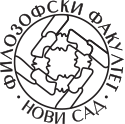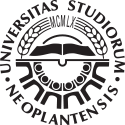14PSPSO10 - Advanced Statistics
| Course specification | ||||
|---|---|---|---|---|
| Course title | Advanced Statistics | |||
| Acronym | 14PSPSO10 | |||
| Study programme | Psychology | |||
| Module | ||||
| Type of study | first degree undergraduate academic studies | |||
| Lecturer (for classes) | ||||
| Lecturer/Associate (for practice) | ||||
| Lecturer/Associate (for OTC) | ||||
| ESPB | 6.0 | Status | ||
| Condition | To attenting the course it is necessary for students to previously attend Introdaction to Statistics (14PSPSO04) course. | Oblik uslovljenosti | ||
| The goal | a) Introducing students: - to complex statistical concepts, constructs, and operators which are used in psychology studies - to complex statistical thinking necessary to understanding psychological phenomena and processes b) Train students: - to choose methods of statistical analyses - to use statistical programs for statistical data analyses - to understand multiple relations among variables as an assumption for studying multivariate analysis | |||
| The outcome | At the end of this course, students are expected to be prepared: - to choose adequate statistical methods for research plots which are frequently used in statistical investigations with larger number of variables and/or multiple measures - to enter in computer data of typical psychological variables measurements and adjust them (by conversion or transformation) to the adequate model of statistical analysis - to carry out data analyses in the specified statistical programs - to interpret results of data analyses | |||
| Contents | ||||
| Contents of lectures | I Simple linear regression analysis; II Special problems in correlations among variables; III Multiple regression analysis; IV Univariate analysis of variance; V Multivariate analysis of variance, VI Analysis of variance with repeated measures; VII Explorative data analysis (visualization); VIII Selection of the methods for data analysis (statistical advisors) | |||
| Contents of exercises | Conducting the statisical analyses using adequate statistical softwares and interpretation of the results | |||
| Literature | ||||
| ||||
| Number of hours per week during the semester/trimester/year | ||||
| Lectures | Exercises | OTC | Study and Research | Other classes |
| 2 | 2 | |||
| Methods of teaching | Lectures and exercises | |||
| Knowledge score (maximum points 100) | ||||
| Pre obligations | Points | Final exam | Points | |
| Activites during lectures | 10 | Test paper | 30 | |
| Practical lessons | Oral examination | 40 | ||
| Projects | ||||
| Colloquia | 20 | |||
| Seminars | ||||

